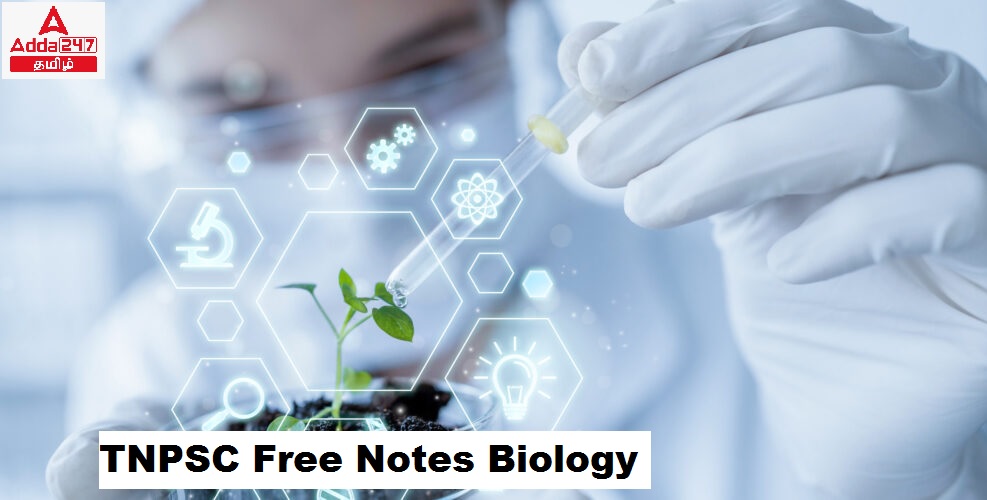இந்தக் கட்டுரையில், TNPSC குரூப் 1, குரூப் 2, குரூப் 2A, குரூப் 4 மாநிலப் போட்டித் தேர்வுகளான TNUSRB, TRB, TET, TNEB போன்றவற்றுக்கான முறைகள் இலவசக் குறிப்புகளைப் பெறுவீர்கள்.தேர்வுக்கு தயாராவோர் இங்குள்ள பாடக்குறிப்புகளை படித்து பயன்பெற வாழ்த்துகிறோம்.
Pollution
Pollution is the damage caused to the environment mainly because of human
activities.
Any substance that causes pollution is known as a pollutant.
Pollution is an unwanted change in the physical, chemical and biological
characteristics of our land, air and water.
Types of Pollution
There are four major kinds of pollution:
Air pollution
Water pollution
Land (soil) pollution
Noise pollution
Effects of air pollution
Most air pollution is caused by the burning of fossil fuels (e.g. oil, petrol, coal
and natural gas).
These fossil fuels are used in factories (industries), power plants and motor
vehicles.
Burning these fossil fuels release toxic gases and fine particles (such as ash and
soot) into the air causing air pollution.
Acid rain
Certain toxic gases produced by industries mix with raindrops high in the
atmosphere and make rain unusually acidic. This is called acid rain.
It damages plants, washes the nutrients out of soils and kills fish
Water pollution
Water pollution occurs when wastes from factories, houses and farms mixes with
the water in rivers, lakes, ponds, the ocean or even groundwater.
Contaminated or polluted water can spread diseases and chemicals which are not
good for our health.
The most significant sources of water pollutants are:
Sewage (water we use at home for bathing, cleaning, cooking).
Industrial effluents (liquid wastes from factories).
Agricultural pollutants (chemical pesticides and fertilizers that get washed from
farms).
Solid waste (when waste gets dumped into water bodies).
Soil pollution
In the same way as water and air get polluted, land or soil pollution happens
when toxic chemicals change the natural balance in soil.
Land pollution comes from farming (Excess use of chemical pesticides and
fertilizers), mining (digging up metals and other materials), factories (industrial
waste) and the solid waste from our own homes like plastics and broken
electronics.
Soil pollution affects animals, humans and even plants
Noise pollution
Unwanted and unpleasant sound is called noise pollution.
Noise level above 120 db is considered harmful to human beings.
Effects of noise pollution
Loud noise or even loud music can damage our ears.
Noise pollution has been directly linked to stress and health impacts such as high
blood pressure and hearing loss.
Noise pollution also disturb animals especially birds.
Underwater noise pollution from ships can make whales lose their way as they
use sounds to navigate.
Global warming
It refers to an average increase in the temperature of the atmosphere or simply it
is the warming of the earth.
1998 was the hottest year the world over.
Green House effect
Green House Effect is a process by which radiant heat from the sun is captured
by gas in the atmosphere that increase, the temperature of the earth ultimately.
The gases that capture heat are called Green House Gases which include carbon
dioxide (CO2), methane (CH4), Nitrous Oxide (N2O) and a variety of
manufactured chemicals like chlorofluorocarbon (CFC).
Increase in green house gases lead to irreversible changes in major ecosystems
and climate patterns.
CO2 (Carbon dioxide)
Coal based power plants, by the burning of fossil fuels for electricity generation.
Combustion of fuels in the engines of automobiles, commercial vehicles and air
planes contribute the most of global warming.
Methane
Methane is 20 times as effective as CO2 at trapping heat in the atmosphere.
Its sources are attributed paddy cultivation, cattle rearing and bacteria in water
bodies, fossil fuel production, ocean, nonwetland soils and forest / wild fires.
N2O (Nitrous oxide)
It is naturally produced in Oceans from biological sources of soil and water due
to microbial actions and rainforests.
Man-made sources include nylon and nitric acid production, use of fertilizers in
agriculture, manures cars with catalytic converter and burning of organic matter.
Effects of Global Warming
Rise in global temperature which causes sea levels to rise as polar ice caps and
glaciers begin to melt causing submergence of many coastal cities in many parts of
the world.
There will be a drastic change in weather patterns bringing more floods or
droughts in some areas.
Biological diversity may get modified, some species ranges get redefined.
Tropics and sub-tropics may face the problem of decreased food production.
Ozone depletion
Ozone layer is a region of Earth’s stratosphere that absorbs most of the Sun’s
ultra violet radiation.
The ozone layer is also called as the ozone shield.
The ozone shield is being damaged by chemicals released on the Earth’s surface
notably the chlorofluorocarbons widely used in refrigeration, aerosols, Chemicals
used as cleaners in many industries.
The decline in the thickness of the ozone layer over restricted area is called
**************************************************************************
| Adda247 TamilNadu Home page | Click here |
| Official Website=Adda247 | Click here |




